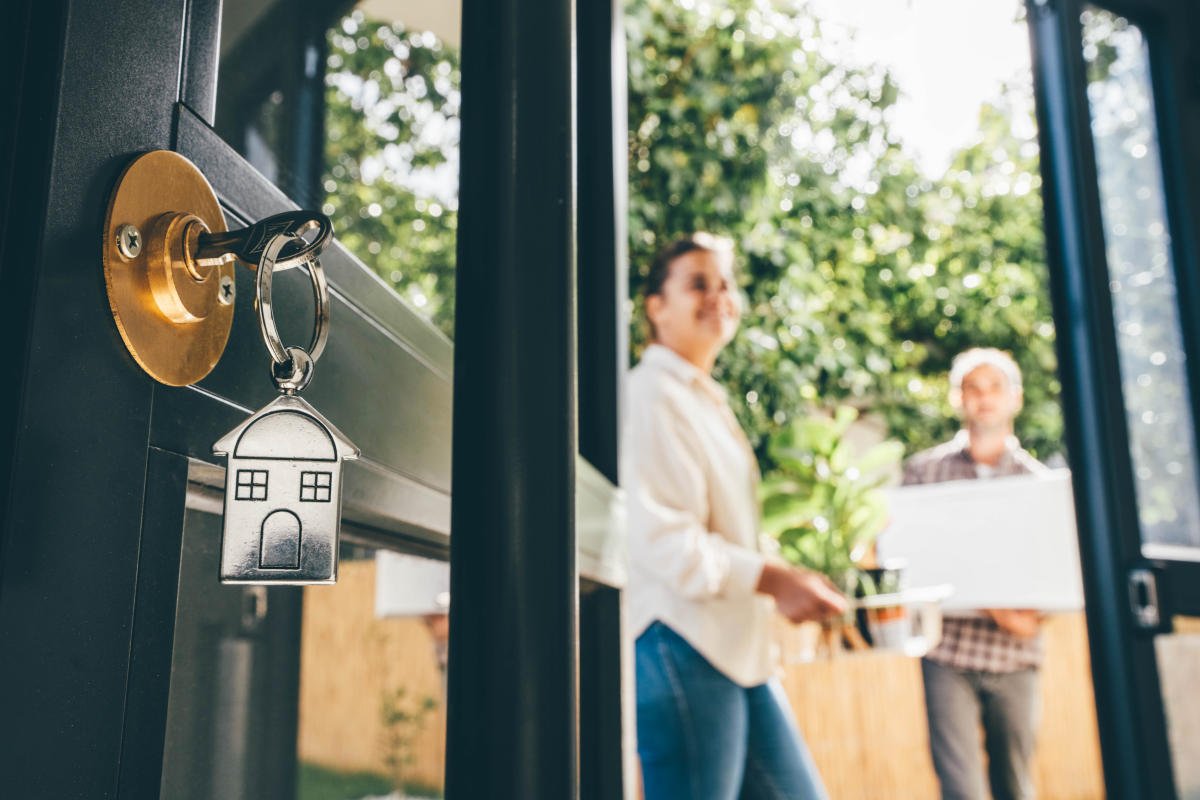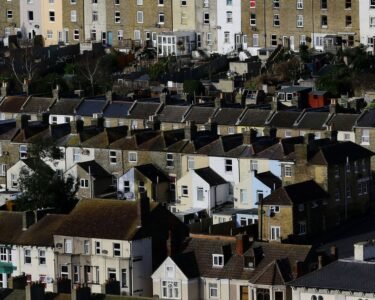If, like most first-time home buyers, you’re strapped for cash, a low down payment option for financing your home is an enticing possibility. Home prices have escalated in recent years, and loan programs are in place to help buyers overcome the challenge of coming up with the significant funds required for a down payment.
Many homebuyers share the misconception that they must make a down payment of 20% to buy a home, but the typical down payment for a first-time home buyer was 8%, according to the National Association of Realtors’ 2023 Profile of Home Buyers and Sellers.
Dig deeper: How much money do I need to buy a house?
Numerous loan programs are in place that allow for significantly lower down payments from 3% to 5%.
In 2023, however, several lenders introduced mortgage loans with a down payment requirement of just 1%.
What is a 1% down payment loan?
A 1% down payment loan refers to a mortgage that requires borrowers to make a down payment of as little as 1% of the purchase price of the home.
So far, only a handful of lenders offer this 1% down payment program. These loans are limited to borrowers who meet the credit requirements for the loan and earn less than 80% of their area’s median income.
The lenders that introduced a 1% down payment option are offering this program through the Fannie Mae HomeReady and the Freddie Mac Home Possible loan programs, each of which allows for a total down payment of 3%. Technically, these 1% down payment loans are 3% down payment loans, with the lender paying the other 2% of the down payment in the form of a grant.
Conventional mortgages, which are loans that are not backed by a government agency such as the Federal Housing Administration (FHA) or the U.S. Department of Veterans Affairs (VA), typically require private mortgage insurance (PMI) on loans with a down payment of less than 20%. However, some lenders may waive the mortgage insurance requirements or wrap the costs into the loan for some programs. Otherwise, you’ll need to calculate PMI premiums into your monthly housing payment.
How to qualify for a 1% down mortgage
Although individual lenders may have other qualifications for you to apply for a 1% down payment loan, there are generally two main requirements to meet:
-
You must have a minimum FICO credit score of 620.
-
Your income must be less than 80% of the median income in your county.
You can look up your area’s median income on the Fannie Mae website and search by address. For example, the area median income for loan purposes in Washington, D.C., is $150,400, and the income limit for the HomeReady program is $120,320. In areas with a lower cost of living, such as Rochester, N.Y., area median income is $97,300, and the income limit for the loan program is $77,840.
If you qualify for a 1% down payment loan based on your credit score and income, then you’ll need to check out additional requirements with a lender. Both the Home Possible and HomeReady loan programs are open to repeat buyers as well as first-time buyers, but some lenders may have limits on the amount of the loan, whether you’re buying a single-family home or condo or a two- or three-unit residence, and whether you currently own another property.
Lenders will also qualify you based on your ability to repay the loan, so they will review your debt-to-income ratio, which compares your gross monthly income to the minimum payments on all your debt, to assess whether you can make the mortgage payments.
Dig deeper: How to get a mortgage in 2024
Lenders that offer 1% down payment mortgages
National lenders
National lenders such as Rocket Mortgage, Zillow Home Loans, and United Wholesale Mortgage announced their participation in 1% down payment loan programs in 2023, and other local and regional lenders may offer them as well. For example, Riverbank Finance offers a 1% down payment loan program in Michigan.
Rocket Mortgage’s ONE+ loan is available only on single-unit primary residences and is limited to loans of $350,000 or less. Borrowers must pay PMI with this loan program.
The 1% down payment loan from Zillow Home Loans, currently available only in Arizona, also requires borrowers to pay PMI.
United Wholesale Mortgage offers loans through partners such as mortgage brokers and financial institutions. They limit their contribution to the down payment to $4,000, whereas Rocket’s limit is $7,000.
Local lenders
Riverbank Finance’s 1% down payment loan program, which is also limited to a maximum of $4,000, does not require PMI. This financial institution allows borrowers to use gift funds for their 1% down payment. They also require borrowers to live in the home as their primary residence, to not own another residential property, and to have a debt-to-income ratio of 50% or less.
Pros and cons of 1% down payment loans
Pros
The main advantage of a 1% down payment loan is to limit the amount of cash needed to buy a home. Other pros include:
-
You can use your cash for other needs, including closing costs or an emergency fund.
-
You gain 2% in home equity without using your own funds.
Cons
Still, there are some disadvantages to a 1% down payment loan, including:
-
You may not qualify for the program due to income restrictions.
-
With a low down payment, you have less equity in your property. If home values decline, you could end up owing more on your loan than your property is worth.
Alternatives to a 1% down payment loan
If your income is too high for a 1% down payment loan or your credit score is too low, you may want to look at alternative mortgage options that also have a low down payment requirement.
In fact, even if you do qualify for a 1% down payment loan, you should compare other loan programs to be certain that you are getting the best possible option for your individual circumstances.
Other low or no down payment options include:
-
FHA loans: FHA loans require a down payment of 3.5%.
-
VA loans: VA loans allow 0% down payments for military service people and veterans.
-
USDA loans: USDA loans are also available for no money down for borrowers who meet income limits and buy a home in a designated rural area.
-
Conventional low down payment loans: The HomeReady and Home Possible loan programs require a down payment of 3%.
-
Down payment and closing cost assistance: State and local programs across the country are available to help low- and moderate-income buyers with down payment, closing cost assistance, and more.




